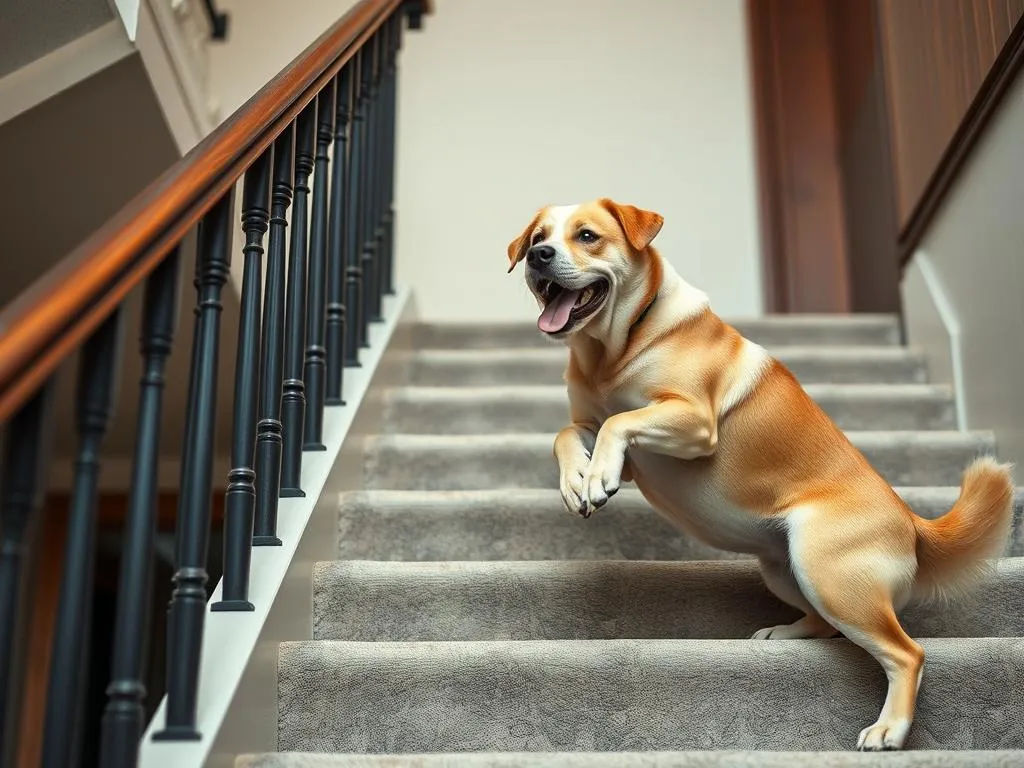
Introduction
Teaching your dog to navigate stairs is an essential skill that can enhance their mobility and safety in various environments. Whether you live in a multi-story home or frequently visit places with stairs, ensuring your dog is comfortable with this task can significantly improve their quality of life. However, many dog owners encounter challenges, such as their pets being fearful or hesitant to approach stairs. This article will guide you through the process of training your dog to climb stairs, addressing potential issues and providing step-by-step instructions to make this training enjoyable for both you and your furry friend.
Understanding Your Dog’s Behavior
Dog’s Natural Instincts
Dogs are naturally curious creatures, but their perceptions of stairs can vary widely. Some dogs may view stairs as an exciting challenge, while others may see them as intimidating obstacles. Factors such as breed, age, and previous experiences with stairs can influence this perception. For instance, breeds that were developed for agility may take to stairs more easily than larger breeds that might feel unsteady or unsure.
Identifying Fear and Anxiety
Before beginning your stair training, it’s crucial to assess your dog’s attitude towards stairs. Signs of fear may include:
- Whining or barking when approaching stairs
- Refusing to move or attempting to retreat
- Trembling or panting
- Clinginess or seeking comfort from you
Addressing any fear or anxiety your dog may have is vital before proceeding to training. Ignoring these feelings can lead to heightened stress and may hinder their ability to learn.
Preparing for Stair Training
Assessing the Environment
Before starting the training process, you must ensure that the stair environment is safe. Look for any hazards such as loose railings, slippery surfaces, or objects that might obstruct your dog’s path. The material of the stairs can also affect your dog’s confidence. For instance, carpeted stairs may provide better traction than hardwood or tile. If your stairs are slippery, consider using non-slip mats or carpets to enhance grip.
Gather Necessary Tools
Having the right tools can make training more effective and enjoyable. Here’s a list of items you might find helpful:
- Treats: Small, tasty rewards to motivate your dog.
- Leash: To maintain control and guidance.
- Harness: Offers added support for dogs that may feel insecure.
- Clicker: A great tool for positive reinforcement, marking desired behaviors with a distinct sound.
Step-by-Step Guide to Training Your Dog to Climb Stairs
Introduce the Stairs Gradually
Begin by allowing your dog to explore the stairs at their own pace. Keep your dog on a leash to maintain control, but let them approach the stairs without pressure. Use treats to encourage curiosity; toss a treat on the first step to capture their attention. Be patient and give them time to investigate before attempting to climb the stairs.
Teaching the First Step
Once your dog seems comfortable with the stairs, it’s time to teach them to step up. Use treats to guide them onto the first step. As they make an effort to climb, praise them enthusiastically. Immediate positive reinforcement is crucial; it helps your dog associate the stairs with something rewarding. If your dog hesitates, don’t rush them. Encourage them gently and wait for them to show interest.
Progressing to Additional Steps
After your dog has mastered the first step, gradually encourage them to move to the next one. Continue using treats and praise to reinforce their efforts. It’s essential to keep training sessions short and engaging—about 5-10 minutes at a time. Allow for breaks to avoid overwhelming your dog. Celebrate every small victory, and don’t forget to maintain a calm demeanor; your positive energy will encourage your dog to feel more secure.
Practicing Going Down the Stairs
While ascending the stairs is important, teaching your dog how to come down is equally essential. Many dogs feel more anxious about descending, so it’s vital to approach this step with care. Start at the top of the stairs and encourage your dog to come down using treats. You can also lead them down on a leash. Focus on creating a safe and positive experience. If your dog appears hesitant, consider taking a step down with them, offering them reassurance as they follow.
Reinforcing Confidence and Independence
As your dog becomes more comfortable, allow them to navigate the stairs independently. Continue to supervise their practice but give them the freedom to explore at their own pace. Encourage regular practice sessions to reinforce their skills. Consistency is key to building their confidence and independence when it comes to climbing stairs.
Troubleshooting Common Issues
Handling Reluctance or Fear
If your dog shows reluctance or fear during training, it’s essential to remain patient and understanding. Easing anxiety can involve breaking the training down into even smaller steps or providing extra encouragement. Consider using a favorite toy or a beloved person to help motivate your dog. If fear persists, consult with a professional trainer who can provide tailored strategies.
Dealing with Physical Limitations
Older dogs or those with physical limitations may struggle with stair climbing. In such cases, adaptations may be necessary. Consider using ramps as an alternative to stairs, which can be easier on their joints. If you notice that your dog is in pain or discomfort, consult your veterinarian for advice on training modifications or equipment that can assist them.
Maintaining Stair Climbing Skills
Regular Practice
Once your dog has learned to climb stairs, it’s crucial to maintain those skills through regular practice. Schedule consistent practice sessions to remind your dog of their training and reinforce their confidence. A few short sessions each week can help keep their abilities sharp.
Reinforcement Techniques
As your dog becomes more comfortable with stairs, continue to reward them with treats and praise. Positive reinforcement should remain a part of your interactions, even as their confidence grows. Incorporate stair climbing into daily routines, such as encouraging your dog to join you when you go up or down stairs. This consistency will help solidify their skills.
Conclusion
Training your dog to climb stairs is a rewarding process that enhances their mobility and confidence. By understanding your dog’s behavior, preparing the environment, and following a structured training plan, you can help your dog navigate stairs safely and comfortably. Remember to be patient and maintain a positive attitude throughout the training process. Each dog is unique, so adapting your approach to meet your dog’s specific needs will yield the best results. Share your experiences and progress with others, as this journey can be both challenging and fulfilling for dog owners and their beloved pets.









